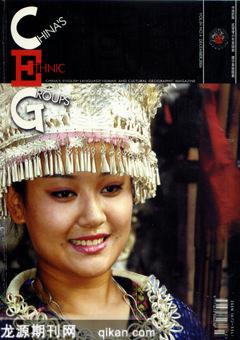Cujui’s spread to foreign countries
Cui Lequan
In history, the sport of cuju or kemari has had a significant influence on the world, and Chinas neighbouring countries in particular, such as Japan and Korea. Whats more, the impact has been profound. Here I would like to explain my point by using Japan as an example, since Japan is one of the countries that have absorbed the richest variety of Chinas ancient traditions and culture. Its absorption of ancient Chinas tsu chu also bears quite some features.
According to the research of Japanese scholars, cuju was introduced from China together with the spread of Buddhism 1,400 years ago. When Prince Naka-no-oe-the main character in the famous Taika Reforms (645) in the Japanese history, played polo with Fujiwara Kamatari, his leather shoe flew away with the ball. Fujiwara Kamatari happened to be at the right place to pick it up and gave it back to the prince on bended knees. He therefore had a chance to get close to the prince. It was the 18th year of the Zhenguan Reign under Emperor Taizong of the Tang Dynasty in China. It is general understanding that the “polo” here refers to tsu chu.
In addition, in “The Collection of Articles about Cuju Passed down by Word of Mouth”, the foreword of the ancient Japanese book “Yuteihisho”, it said: “Cuju started from the foreign region beyond the sea and tens of thousands li away, and has been spread in the imperial land of prosperity.” The “foreign region beyond the sea and tens of thousands li away” here refers to the Tang Dynasty while the “imperial land of prosperity” refers to Japan. Another ancient Japanese book “The Ninety-nine Rules of Cuju”, however, clearly stated: “Cuju was started in the Great Tang Dynasty.” According to the “Dictionary of Japanese History” compiled by Rizou Takeuchi, between 630 and 894, Japan sent a total of 19 missions to the Tang Dynasty, each with 100 to 250 people. Fifteen of these missions arrived in China. They played an active part in spreading the Chinese culture after their return to Japan. The popularity of cuju in Japan, which was mainly introduced by the Japanese missions and students to the Tang Dynasty just reflected such a role of theirs.
After that, contrary to the situation in China that cuju evolved and gradually declined, the sport enjoyed development in Japan. During the Kamakura Period, in particular, cuju-fan Emperor Go-Toba, who was reputed as the “lderly man of cuju” held a grand “cuju competition” in the second year of the Jogen Reign (1208, the early times of the Kamakura Period). As recorded by Japanese literature, the various kinds of rites and systems of cuju that had been introduced into Japan had basically been perfected at that time.
Japans emperors after that period of time all loved cuju. Among them, the emperors Tsuchimikado, Juntoku, Go-Saga, Go-Fukakusa, Kameyama, Go-Uda, Fushimi, Go-Fushimi, etc, admiring Emperor Go-Toba who brought prosperity to Japan, all held cuju contests. Ashikaga Yoshimitsu and Ashikaga Yoshimasa in the Muromachi Period that followed, as well as Oda Nobunaga and Toyotomi Hideyoshi of the Sengoku Period were all good at playing cuju. Special “cuju” were established in the city of Edo at that time and ordinary citizens then also set up “cuju pitches”, indicating the prosperity the game enjoyed.
In this way, there were a lot of cuju fans, ranging from the emperors, officials, generals, warriors, religious officials, monks to ordinary citizens. Such a scene is reflected in Japans books of ancient prose and the ukiyo-e print.
Due to its spread in Japan, cuju and waka in Japan were called the “two principles of cuju and waka.” Even in a time when there was a rigid feudal system, cuju developed further still. Therefore, cujus development of different times brought about numerous well-known people related to the sport. Even today, the Seidaimyojin deity to commemorate famous cuju player Dai-Nagon during the period under the rule of Emperor Toba (the latter years of Heian Period 1107-1122) can still be seen in the Hirano Shrine in Otsu and the Shiramine Jinguh Shramine in Kyoto.

